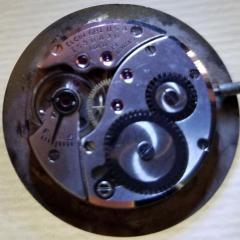-
Recently Browsing
- No registered users viewing this page.
-
Topics
-
Posts
-
Maybe I'm over simplifying this and I'm a little late to the discussion, but just by my looking at oil when I use it on a treated cap jewel the oil stays in one nice bubble, but when I don't it spreads out to the edges of the jewel. I'm not sure (but could well be wrong) but the analogy of a waxed car and rain is accurate in this case, the wax is very hydrophobic and repels the water, however, the process epilame works by is a different physical process based upon cohesion/adhesion (oleophilic) not repulsion (oleophobic) at least as far as I have read/observed. If one were to use a oleophobic substance equivalent to wax (hydrophobic) then one would need to create a donut shape to fence in the oil, however if one used such a strategy with a epilame which is oleophilic then the oil would sit on the ring of the donut and not in the 'donut hole', exactly where you don't want it. Even if the oil is smeared then the oleophilic epilame should pull it back to the center (see diagram below). Reference For interest the chemical in epilame is 2-(PERFLUOROHEXYL) ETHYL METHACRYLATE, CAS NO: 2144-53-8
-
If the oil drop was freely standing on an epilame treated cap jewel it could easily slide off if you knocked the watch hard but the balance pivot keeps it in place.








Recommended Posts